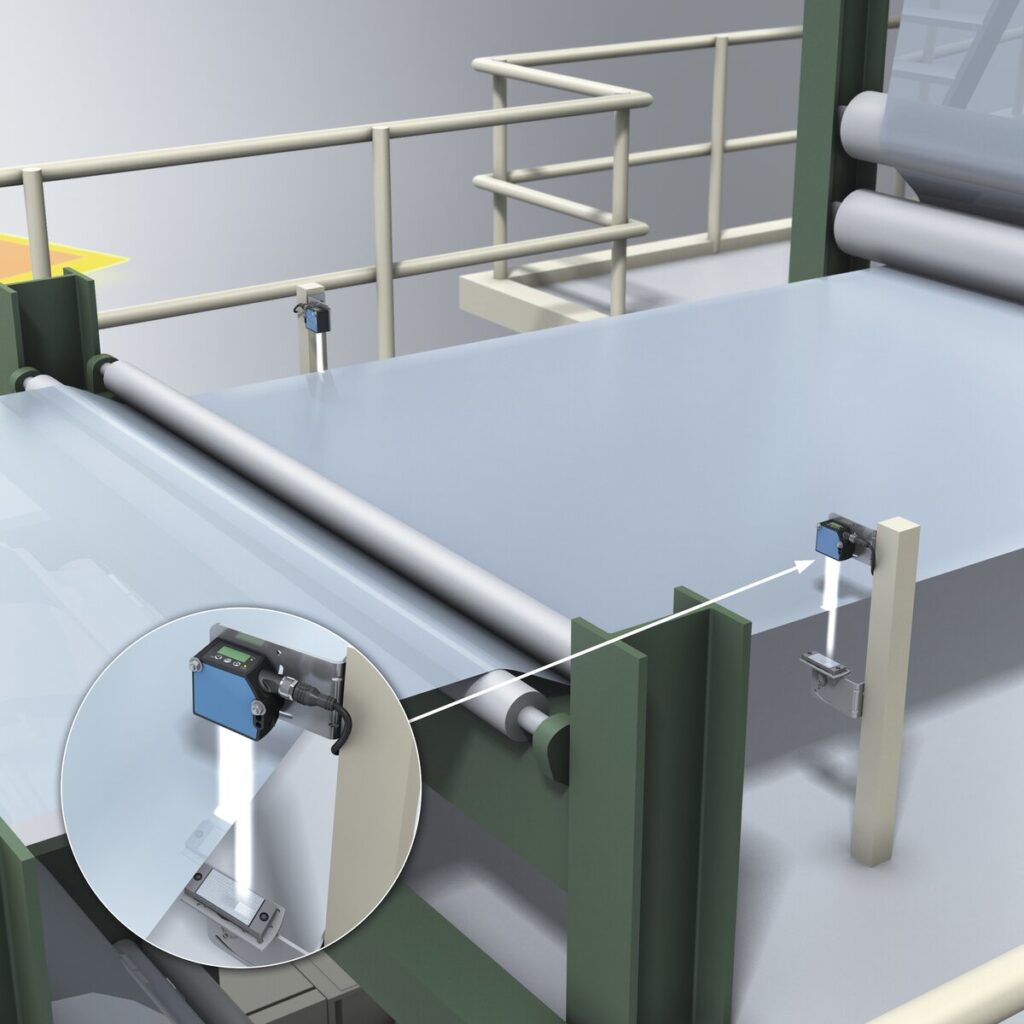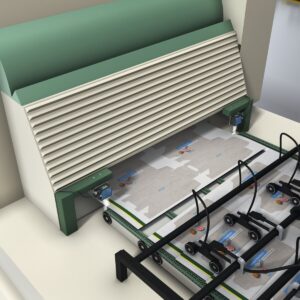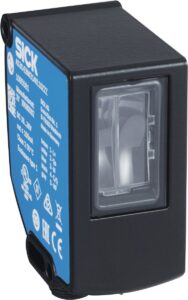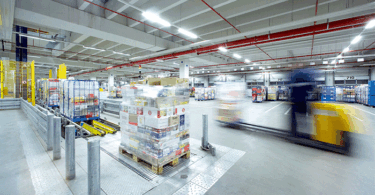New AS30 array smart sensor solves wide variety of demanding automation tasks
The new AS30 array sensor provides added flexibility and efficient communication for the demanding automation tasks, especially on packaging lines featuring edge detection technology. The compact and user-friendly sensor features operation modes for edge guidance, width and center measurement, and object positioning.
With the AS30, the edge itself does not need to be overly clear and distinct because the high resolution sensor can detect even the smallest grayscale and contrast differences. This even applies to opaque and transparent materials or very small objects. With two switching outputs, an analog output, and IO-Link, this sensor is ready for integration into a wide variety of automation environments.
It also has simple mechanical integration into the machine. Thanks to its compact design, versions for different working distances and field of view widths, and suitable mounting accessories to support it, the AS30 array sensor offers a high level of installation flexibility and edge detection – even in tight spaces.

Four Integrated Operation Modes
The AS30 comes with four integrated operation modes in total. The edge detection operating mode detects and measures the unwound edge when processing continuous materials such as films, cardboard, paper, tubular bags, web-fed labels, or non-woven fabrics. The detection can occur either by means of the edge of the web or an optical line or marking on the material. If there are multiple edges in the field of view of the sensor in a particular application, the sensor will register the absolute height and contrast variation of the edge being monitored and will “hide” the other ones. This guarantees a high level of optical reliability.
The object positioning mode allows for reliable detection the position of objects such as paper sheets or card stock, flat workpieces, or printed-circuit boards with the help of the array sensor. The user has the option to output positioning ramps via the analog output of the sensor or its IO-Link connection to slow down and stop the object.
In width measurement mode, it is possible to simultaneously detect two edges and verify the distance from one another. A process involving the continuous application of material, for example welding, or the application of an adhesive bead by an adhesive application system, can be detected and monitored with great precision and the application width verified. This enables the early detection of possible application or process errors to ensure product quality and avoid waste.
Finally, the center measurement mode also involves detecting two edges in the field of view of the AS30 and then calculating the midline between them.
 A True Plug and Play Solution
A True Plug and Play Solution
To fulfill the performance requirements of widely different applications, the AS30 product family offers two variants, called Core and Prime. Both versions allow the user to select between a 25mm working distance with a field of view of 30mm, or a 100mm working distance with a 50mm field of view. This allows a very flexible, application-oriented sensor selection.
For time-efficient and easy commissioning, the plug and play capability of the AS30 sensor makes it ready to use without further configuration. An optional edge teach-in process increases the process reliability of the sensor in borderline situations. The settings of the sensor can, however, be adjusted by the user at any time via IO-Link and the SICK engineering tool SOPAS.
The large light spot enables quick alignment to the object, and time-consuming fine adjustments is unnecessary thanks to the large measuring range. Additional features of the two variants, Core and Prime, are the two switching outputs and the analog output. The latter not only provides the machine controller with the necessary control information in a 4-20 mA format, but also reports when and where the edge leaves the field of view of the sensor using a 3.5 mA or a 20.5 mA signal.
 AS30 Prime: Maximum Repeatability and Smart Task Capability
AS30 Prime: Maximum Repeatability and Smart Task Capability
The name says it all: the AS30 Prime is the top variant in the product family in terms of characteristics and functionality. For example, this variant can be operated in direct sensing or reflector mode, thereby enabling it to reliably detect not only opaque but also transparent materials. For example, it can detect a transparent pull strip of products packaged in foil.
Repeatable results can be achieved right down to 30µm, thereby enabling highly demanding processes – right through to the precision unwinding of transparent or glossy web materials, or checking the roundness of bottles – to be controlled and regulated with ultra-high precision. The function buttons and easy-to-read TFT display of the AS30 Prime make it easy to configure the device, and allow the visualization of important information such as edge position, process quality, or sensitivity settings, and diagnostic data such as temperature or operating hours.
Furthermore, switching points or ranges can be individually defined and configured for optimal position or width monitoring. This and other intelligent edge-computing functions can effectively reduce the load on the communication and automation systems.
AS30 Core: Focused on the Essentials
The functionality of the AS30 Core focuses on edge guiding and object positioning of opaque and semi-transparent materials. Designed exclusively for sensing edges, this array sensor achieves repeatable results down to 200 µm, which is more than sufficient for a large number of tasks. The Core variant delivers, via its IO-Link connection, everything you would expect from a smart sensor, in particular detection performance, efficient communication, and diagnostics functions.
Wide Range of Applications with Edge Detection
Everywhere where web edges or widths must be detected with high precision for process control and quality assurance, the array sensors in the AS30 product family from SICK offer sophisticated application possibilities. The ease of integration, high level of precision, and functionally modular design of the sensors guarantee an optimal solution for a broad range of applications both from an application technology and cost-effectiveness perspective. The AS30 array sensors offers product-, process- and future-ready automation solutions.
Want to learn more about the AS30 Array Sensor? Contact a SICK representative today!





